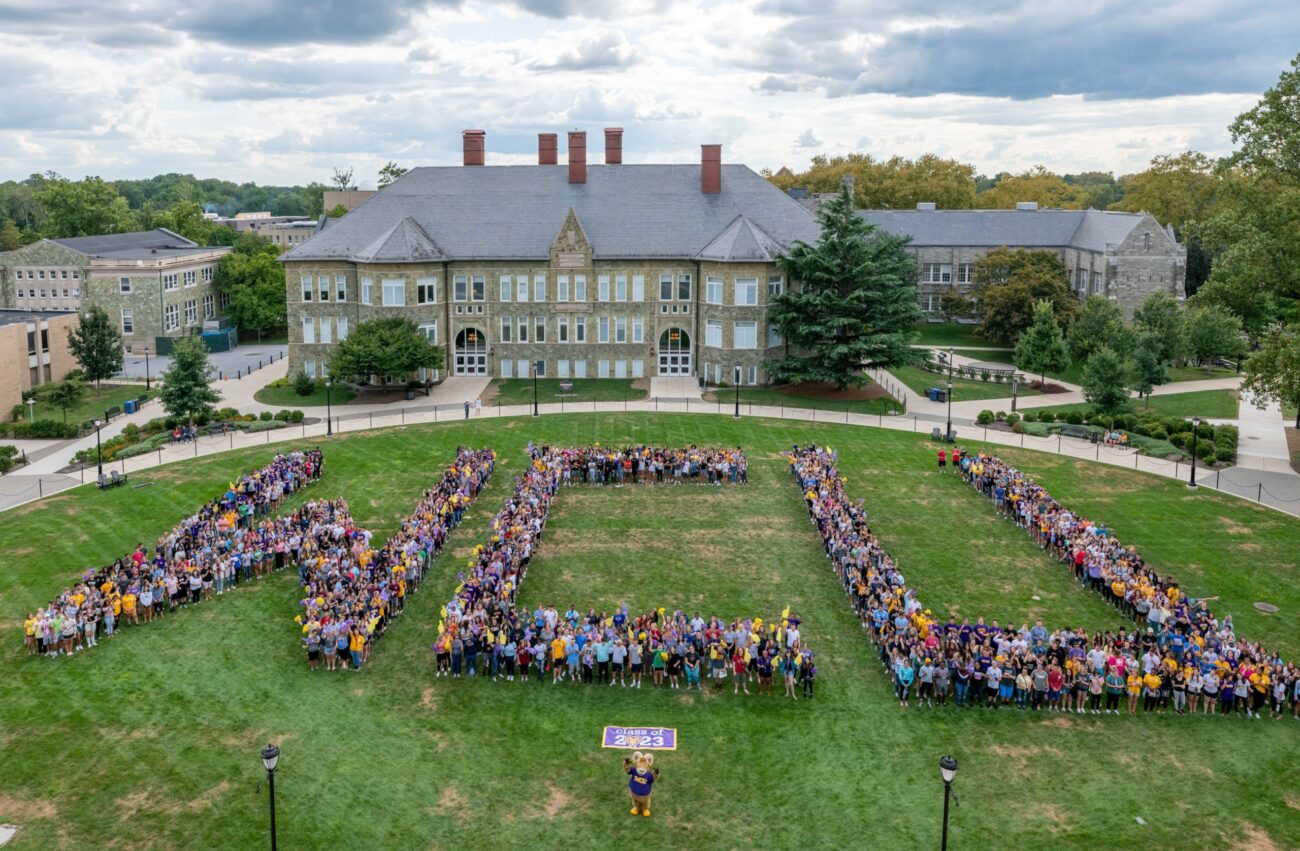Author: Caroline Bruce
As a freshman in high school I discovered “social media”. Once I reached ninth grade, doors and windows opened in every direction. My obsession began on Facebook, but whose didn’t? It then moved quickly to Twitter. I began following celebrities, comedy pages, and then one day a recommendation appeared on my feed. The twitter handle read, “ItsFeminism”. Without hesitation, I clicked the “x” in the top right corner and said good-bye to anything feministic. About halfway through my high school career, I decided to share that same article I closed out of with one of my closest friends. She asked me “are you a feminist?”. I had never been asked this before and answered, “I don’t think I am.”
… Was I?
The next minute changed my perspective forever. My friend asked, “do you believe in the equality of all sexes?”. Of course, I replied with “100% YES!”. My friend turned to me and said, “that is feminism.”
In 2014, Malala Yousafzai, a Pakistani activist for female education and the youngest-ever Nobel Prize recipient, stood before the world and said, “we cannot all succeed when half of us are held back”. Less than two years ago, it was discovered that only 18% of Americans responded positively to identifying as feminists. When asked, “do you believe in the equality of sexes?”, 82% of Americans replied “yes” (Allum, 2015). Little does that 82% realize, both questions ask the same thing. Feminism is defined as, the advocacy of women’s rights based on the equality of the sexes (Dictionary.com). It does not discriminate towards men nor does it require you to be a female. This movement is a fight for utter equality for men, women, and children of any race, gender, or sexuality.
Why does society have a skewed idea of what feminism truly stands for?
To fully comprehend feminism, a few questions need to be answered. Such as; “what is feminism?” and “how do we view feminism across centuries?”, “who can be a feminist?”, and “how do we understand feminism across national boundaries and cultural borders?” (Offen, 1988). Therefore, society raises new stereotypes against the word “feminist” every day. Luckily, as a feminist, I know that I have the capability to give others an understanding of what being a feminist looks like. Whether you believe it or not, so do you.
What is feminism?
A simple question, and yet, Allum’s research shows that, 82% of America would answered incorrectly. To fully explain feminism, I encourage you to have a better understanding of the history of women empowerment, and the fight for equality among sexes. The history of feminism is complex from the time-honored concerns of politics and power (Offen, 1988).
In our own country, feminism has walked through several movements throughout the history of time. From the Women’s Suffrage Movement in the 18th and 19th centuries to the Million Women March, that took place only less than a month ago. In the past, women may have let men fight their battles for them. The culture of feminism encourages women to fight for their equality, men to support the equality of sexes, and for the children being raised in our society to understand that being feminist means to believe in equal rights for all human beings not only women. Feminism is a fight. A fight for equality, acceptance, and hope that one day, our world would be one of equal opportunities for all sexes.
Who can be a feminist?
One word, ‘anyone’! Feminism is not discriminatory against sex, gender identity, race, or sexuality. The concept of “feminism”, makes a majority of society views feminism as solely a woman’s belief. The feminism movement is the first social movement for women. It not only seeks to discover equality between all genders, but seeks to give back women everything they were denied as well. In 200, a central theory was discovered of feminism (Wetherll). Wetherll found that citizens who identify as anti-feminists, believe that feminism creates gender relations which then become power relations. Therefore, any improvement in the position of women must, in a sense, be offset by a reduction of the power and influence wielded by men.
While the terms “humanism” or “equalism” seem more appropriate to ant-feminists, the emphasis on the femininity of the term is to accentuate the importance of women’s equality to men. However, the womanliness of the term should not avert men or anti-feminists from joining in on this powerful movement. In 2010, it was found that there was an obvious association of feminism with unfemininity, man-hating and lesbianism (Scharff). Scharff discovered that thirty-one research participants from her experiment described feminists as being manly, lesbian, anti-men, or against femininity.
The misconceptions perceived by society of feminists as a whole create distance between anti-feminists and the feminist movement. Therefore, a man can be a feminist just like a child can be raised to be a feminist. Identifying as “feminist” does not make a person any less manly or any more feminine. Rather, it makes them a much more accepting and supportive human being.
How do we understand feminism across national boundaries and cultural borders?
When I seek out discussions about feminism, I hold the term “intersectionality” close to my heart. The definition of “intersectionality” is; the interconnected nature of social categorizations such as race, class, and gender as they apply to a certain individual or group, regarded as creating overlapping and interdependent systems of discrimination (Dictionary.com).
Unfortunately, in the history of women empowerment movements, the women fighting for their right to vote or their ability to work the same job as a man, were fighting to stand up for one type of woman. Revolutionary women leaders of the Women’s Suffrage Movement, such as Susan B. Anthony or Elizabeth Cady Stanton, saw the injustice against sexes in America, and yet they turned a blind eye to the discrimination towards men and women of color. To be able to fully believe in feminism for its true definition, feminists need to understand that he or she is not fighting the fight for only their equality, but also for the equality of people who are different than themselves.
We live in a society where a label is attached to a lot of things making it hard for women and men to take on another label as a feminist. How can we encourage men and women of all different ethnicities, as well as class-status, sexuality, and political status, to accept the label as feminist as well? Scharff discovered that when men or women stress that his or her status depends on color rather than gender, he or she assumes a racialized position (Scharff, 2011). While the role of cultural context is not strongly identifiable in Scharff’s data, her research does uncover that different layers of identity, such as: age, race, gender and class, play out differently in particular contexts.
How can we make a change?
I am lucky to have a lot of friends all with their own unique and beautiful stories. We are all so different, and yet I wish nothing more but for us to be equal. Despite their skin color, their sexuality, or how they choose to vote in an election, I strive to create conversation that reflects my views on equality. Feminists reassuring others is an effective way to spread the message that feminism projects. In our society, feminism has started to take on the equivalence of a curse word. To compare a struggle for equality that denies women of even the most basic human rights is an undeniable injustice in society today.
How can we make a change? Have intentional conversations, and effectively and truthfully explain why feminism is important. I encourage you to not just step outside of your comfort zone, but leap! Seek out uncomfortable conversations but create impact out of them. Feminism, as a movement, does not have a quiet voice and whether you are insecure about declaring your beliefs or being rejected by others, know that the impression you leave on others can have life changing effects. After my friend turned to me in the car and spoke such an obvious reality to me, my perspective on how I perceive others and myself radically changed. Overall, it takes one voice, one conversation, one friend, to make a difference, and in the words of the powerful Malala Yousafzi, “When the whole world is silent, even one voice becomes powerful”.
References
Allum, Cynthia. (2015). 82 percent of Americans don’t consider themselves feminists, poll shows. The New York Times. Retrieved from
http://nytlive.nytimes.com/womenintheworld/2015/04/09/82-percent-of-americans-dont-consider-themselves-feminists-poll-shows/
Feminism [Def. 1]. In Dictionary.com Online, Retrieved February 17, 2017, from http://www.dictionary.com/browse/feminism
Intersectionality [Def. 1]. In Dictionary.com Online, Retrieved February 17, 2017, from http://www.dictionary.com/browse/intersectionality
Offen, K. (1988). Defining feminism: A comparative historical approach. Journal of Women in Culture and Society, Volume 14 (1), pp. 119-157.
Scharff, C. (2011). ‘It is a color thing and a status thing, rather than a gender thing’: Negotiating difference in talk about feminism. Sage Journals, Volume 21 (4), pp. 1-19
Wetherll, N, E. (2001). Jekyll and Hyde: Men’s constructions of feminism and feminists. Sage Journals, Volume 11 (4), pp. 1-19.












